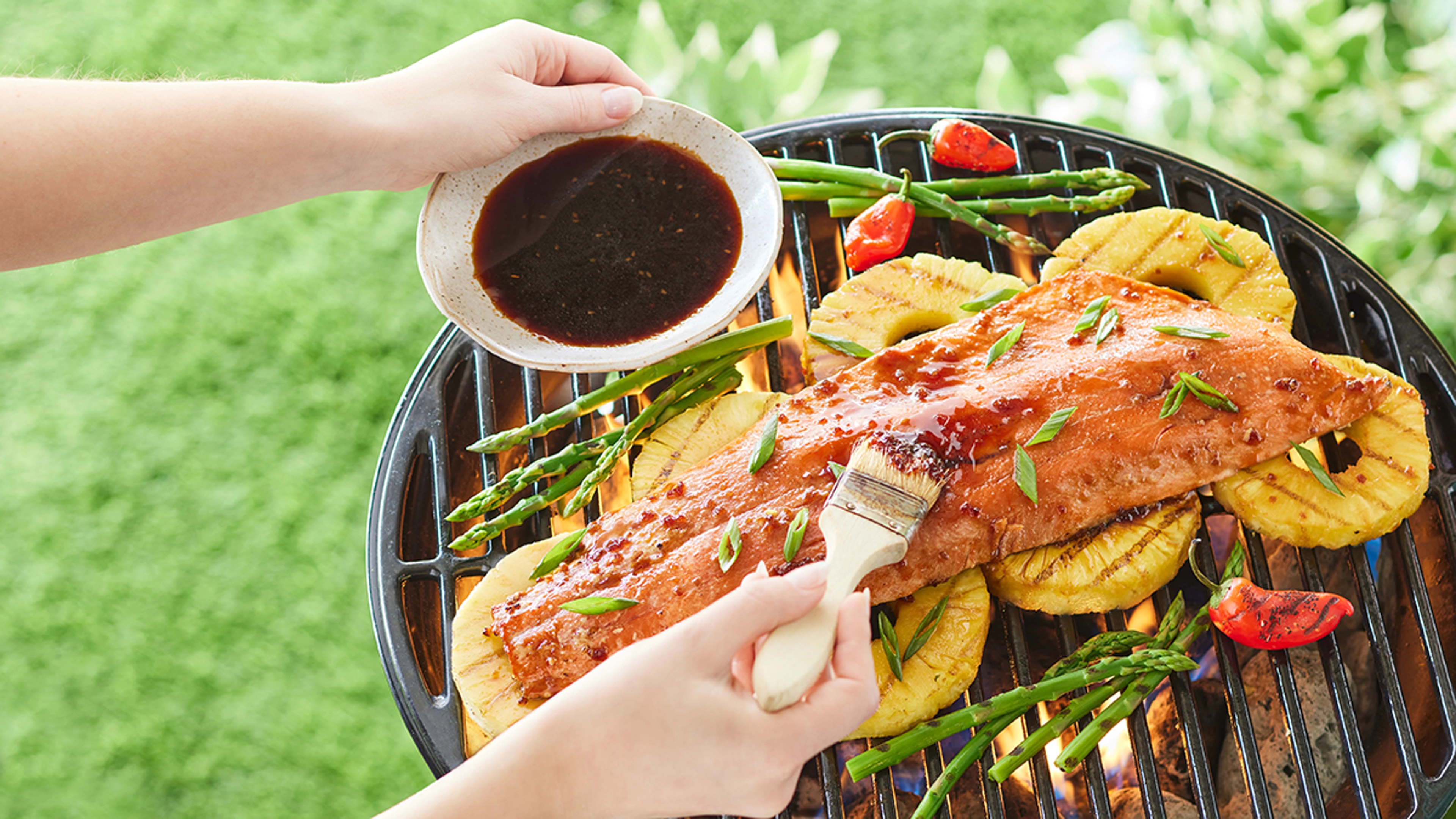Wild halibut from icy Alaskan waters has a firm, snowy white flesh and mild, gentle flavor. It's a favorite of chefs and home cooks alike for its versatility and how it takes on marinades and sauces, such as herbaceous pesto, and the bright, sunny flavors of tomatoes and capers.
If you're new to cooking halibut at home, here are five easy, delicious ways to prepare it — including kid-friendly halibut cakes for dipping in homemade ketchup.
And here's a tip: When cooking halibut or any fish, a fish spatula comes in handy. This long, thin metal spatula makes flipping delicate fish fillets easier than a standard spatula, protecting your investment as well as the look and texture of your fish, since it allows you to remove the fish without the risk of it falling apart. It's also an excellent tool for flipping salmon burgers!
Braised
Slow and Low Citrus and Olive Halibut
The slow and low cooking technique — also called basting, braising, or stewing — is not only excellent for rendering tender halibut fillets but also helps retain more of halibut’s plentiful omega-3 fatty acids that can be otherwise reduced during high-heat cooking, such as deep frying. Even though the method is “slow,” the process takes only about 20 to 25 minutes in a 300-degree oven. Pair slow-cooked halibut with a sunny citrus and warm olive topping. Or try a bold eggplant, onion, and red pepper en saor sauce, a Venetian preparation full of sweet and sour flavors.

Broiled
Teriyaki Halibut
In Asian cultures, teriyaki refers to the culinary technique known as broiling. But the word teriyaki is also used to refer to the flavors of the traditional teriyaki sauce composed of soy, rice wine, and sugar in which steak, chicken, or fish are marinated before broiling. Halibut’s mildness makes it the perfect canvas for this quick Asian-inspired marinade, and the teriyaki cooking method creates a gently crisped fish exterior while also locking in the juices.

Fried
Pan-Fried Halibut Fish Cakes
Fish cakes are a terrific way to introduce kids to fish and seafood since they are easy to pick up and dip with their hands. And they’re customizable, too. Pulse halibut, or another white fish, or even shrimp in a blender with egg, flour, and your choice of spices to bind them. Then pan fry on medium heat until crispy and browned on both sides. (Don’t forget to use that fish spatula for flipping!) Dip the cakes in ketchup or create a quick tartar sauce by combining 1 cup of mayonnaise with a half cup of sweet pickle relish, chopped pickles, capers or onion, and 1 tablespoon of fresh lemon juice.

Poached
Tomato Salad with Poached Halibut and Mint
The gentle heat of poaching keeps halibut moist and tender, and perfectly enjoyable to eat cold. This recipe calls for adding Pernod, an anise-flavored liquor, to the poaching liquid. But you can swap it for white wine or add aromatic vegetables, such as fennel, or herbs and spices to the liquid — the mild halibut will sop up their flavors. Cool and flake the halibut over a mint and juicy tomato salad for a light lunch. Or build a grain bowl and scatter the poached halibut over the top with cherry tomatoes and avocado for a protein-rich, satisfying meal.

Roasted
Oven Roasted Halibut with Dill Soup
This vibrant green fresh dill, leek, and potato soup is a springtime riff on the heavier, cream-based fish chowder. And topping the soup with an oven-roasted halibut fillet couldn't be easier. Roast the fillets in one pan with a bit of butter in a 400-degree oven until golden brown on one side; flip and cook a bit more (depending on the thickness) for a melt-in-your-mouth fillet. A crisped slice of prosciutto adds a salty, porky punch.

Recipes and photos courtesy of Alaska Seafood Marketing Institute.







